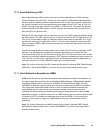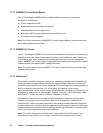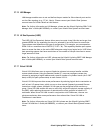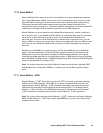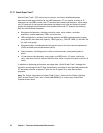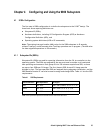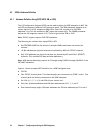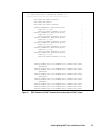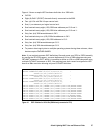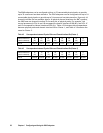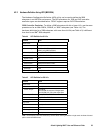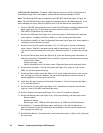
Hitachi Lightning 9900™ User and Reference Guide 53
Chapter 4 Configuring and Using the 9900 Subsystem
4.1 S/390
®
Configuration
The first step in 9900 configuration is to define the subsystem to the S/390
®
host(s). The
three basic areas requiring definition are:
Subsystem ID (SSIDs),
Hardware definitions, including I/O Configuration Program (IOCP) or Hardware
Configuration Definition (HCD), and
Operating system definitions (HCD or OS commands).
Note: The missing interrupt handler (MIH) value for the 9900 subsystem is 45 seconds
without TrueCopy, and 60 seconds when TrueCopy operations are in progress. (The MIH value
for data migration operations is 120 seconds.)
4.1.1 Subsystem IDs (SSIDs)
Subsystem IDs (SSIDs) are used for reporting information from the CU (or controller) to the
operating system. The SSIDs are assigned by the user and must be unique to all connected
host operating environments. Each group of 64 or 256 volumes requires one SSID, so there
are one or four SSIDs per CU image. The first (lowest) SSID for each CU image must be
divisible by four. The user-specified SSIDs are assigned during subsystem installation, and the
9900 Remote Console PC can also be used to assign and change SSIDs. Table 4.1 lists the SSID
requirements.
Table 4.1 SSID Requirements
Controller Emulation SSID Requirements LVI Support
3990-3 0004 - 00FD 3380-x, 3390-x, OPEN-3, -8, -9, -K, -E, -L, -M
3990-6E 0004 - FFFD 3390-x, OPEN-3, -8, -9, -K, -E, -L, -M
2105* 0004 - FFFD 3390-x, OPEN-3, -8, -9, -K, -E, -L, -M
*Note: HPAV operations require that one SSID be set for each set of 256 LDEVs.



